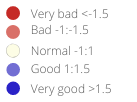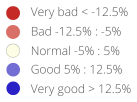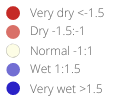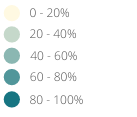United Republic of Tanzania
Assessments
May 2025
Masika crops (sorghum, millet and maize) are in growth stage in bimodal areas, while Msimu crops (sorghum, rice and maize) are currently approaching the harvest period in unimodal areas. Towards this phase, biomass is recorded in or above average in most of the regions: in Dodoma, accounting for nearly 10% of the national cereals production, 27% of the active cropland is seen in abundant vegetation status. Above average rainfall in the last three dekads (Lindi +69%, Ruvuma +82%), helped restore average crop conditions in the southeast. However, areas of below average biomass are visible in Morogo, especially close to water bodies, where 28% of cropland is in poor vegetation status. ECHO reports that heavy rainfall on 14-15 May caused devastating floods in Tanzania's Mbeya Region, specifically in Kyela, Rungwe, and Ileje districts, according to the International Federation of Red Cross and Red Crescent Societies (IFRC).
Hotspots Time Series
Assessment_graph
Country Summary
Statistics
Date
Agricultural cover
Number of administrative units classified as Warning (%)
Warnings and indicator graphs
Date
Cover

Date
Cover
WI_graph1
Date
Cover
WI_graph2
Date
Cover
Indicator
WI_graph3
Indicator temporal profile (ASAP units level 1)
Year
Cover
Indicator
Area
ASAP1 Units
Indicator maps
Main indicators at dekad
Last 6 dekads for indicator
Date
Indicator

Date
Indicator

Date
Indicator

Date
Indicator

Date
Indicator

Date
Indicator

Ancillary Information
Overview maps
Phenology
Layer

Season progress
Dekad

Agricultural area
Cover

Warning frequency map
Cover

ASAP units
Crop calendar and Production
Selection of FAO crop calendars matching with ASAP phenology
CCP_graph1
Agriculture statistics: ten crops with largest area
CCP_graph2
Agriculture statistics: ten crops with largest production
CCP_graph3
Share of national cereal production by subnational units
CCP_graph4





